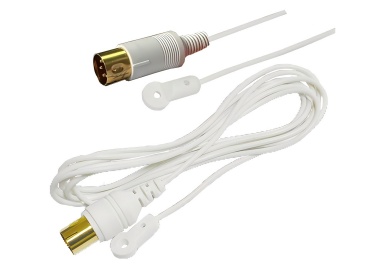What is the purpose of the RF cable?
Jun 20, 2025
With the rapid development of industrial automation, various types of equipment have increasing requirements for high-frequency signal transmission. Whether it is data interaction between precision instruments or signal acquisition and feedback in industrial control systems, stable RF connection has become the key to ensuring production continuity and system response speed. Especially in high-interference, high-frequency, and high-density industrial application environments, higher standards are put forward for the shielding performance, transmission efficiency, and mechanical stability of RF cables.
As an important medium for transmitting high-frequency signals, RF cables are widely used in industrial robots, factory wireless networks, industrial cameras, monitoring systems and other equipment. High-quality RF cables can not only effectively reduce signal loss and external interference, but also improve the communication efficiency and risk resistance of the overall system, laying a solid foundation for the stable operation of automated production lines and smart factories.
The Role of RF Cables in Industrial Environments
Industrial automation environments are often characterized by high electromagnetic interference (EMI), dense equipment layouts, and mission-critical control processes. Under these conditions, standard cables often fail to deliver the required performance. RF cables, with their specialized shielding structures and impedance-controlled design, offer superior transmission quality and noise immunity.
For instance, in smart manufacturing environments, RF cables are used to link industrial robots to control units, ensuring seamless feedback loops and precise coordination. In wireless factory networks, these cables connect antennas to communication modules, guaranteeing stable signal delivery even in electromagnetically noisy conditions.
Why Shielding Matters: Performance in Harsh Conditions
One of the defining features of high-quality RF cables is their shielding effectiveness. Industrial environments are typically saturated with sources of EMI, such as motors, switching power supplies, and variable frequency drives. Without proper shielding, signal distortion and data loss become inevitable.
To counteract this, Era Wing Shing’s RF Cable employs a high-density braided shield combined with low-loss dielectric insulation, significantly enhancing noise rejection and signal fidelity. This makes it particularly suitable for applications in 5G communication modules, radar systems, and industrial IoT (IIoT) devices, where data integrity is paramount.
Mechanical Stability and Flexibility for Dynamic Systems
Beyond signal performance, mechanical durability is also critical. In systems with frequent movement—such as robotic arms or rotating platforms—the RF cable must withstand continuous flexing without degradation.
Era Wing Shing addresses this need by integrating flex-resistant conductors and abrasion-resistant jacketing materials into its cable design. These enhancements reduce mechanical wear, extending the cable’s operational life even under high-duty cycles. Whether deployed in industrial surveillance systems or automated inspection units, such durability ensures long-term reliability.
Application Diversity: From Monitoring to Control
RF cables are not confined to a single niche—they are fundamental in multiple layers of industrial communication architecture:
Industrial cameras use RF cables for high-speed video transmission to monitoring stations.
Remote sensors and telemetry units rely on them for transmitting environmental or system data to central controllers.
Embedded wireless communication modules, especially in edge computing scenarios, depend on stable RF cabling for uninterrupted connectivity.
By ensuring signal stability and reducing transmission delay, RF cables contribute directly to faster response times, higher data throughput, and reduced system downtimes.
Choosing the Right RF Cable: Key Considerations
When selecting an RF cable for industrial use, engineers must evaluate several technical parameters:
Frequency range: Ensure the cable supports the intended frequency band without excessive attenuation.
Shielding type and effectiveness: Look for multiple-layer shielding to guard against EMI.
Flexibility: Important for dynamic environments; materials and construction must support repeated movement.
Connector compatibility: Customizable options like SMA, TNC, or N-type connectors allow seamless integration with existing systems.
Era Wing Shing offers tailored solutions by providing customized interface and cable diameter options to meet diverse application requirements. Whether for data terminals, wireless access points, or automated testing platforms, these cables deliver performance tailored to the application’s technical demands.
RF Cables as Enablers of Intelligent Manufacturing
The purpose of RF cables extends far beyond mere connectivity. They are critical enablers of precision, efficiency, and reliability in industrial automation. With industries moving toward higher-frequency and real-time communication systems, the choice of RF cable has become a strategic decision in system design.
By prioritizing signal integrity, mechanical resilience, and application-specific adaptability, RF cables like those from Era Wing Shing provide the backbone for robust industrial communication infrastructure. As industrial systems continue to evolve, high-performance RF cabling will remain essential to realizing the full potential of smart manufacturing and digital transformation.
If you have purchasing needs for this product or other products, you can send your needs to our email address erawingshing@vip.163.com, and we will provide you with the most professional solution.

 Network Supported
Network Supported